After nearly 30 years of construction and development, on June 12, 2025, the National Assembly officially adopted a Resolution on the reorganization of provincial-level administrative units in 2025. Accordingly, the entire natural area and population of the former Da Nang City and Quang Nam Province were consolidated to establish the new Da Nang City.
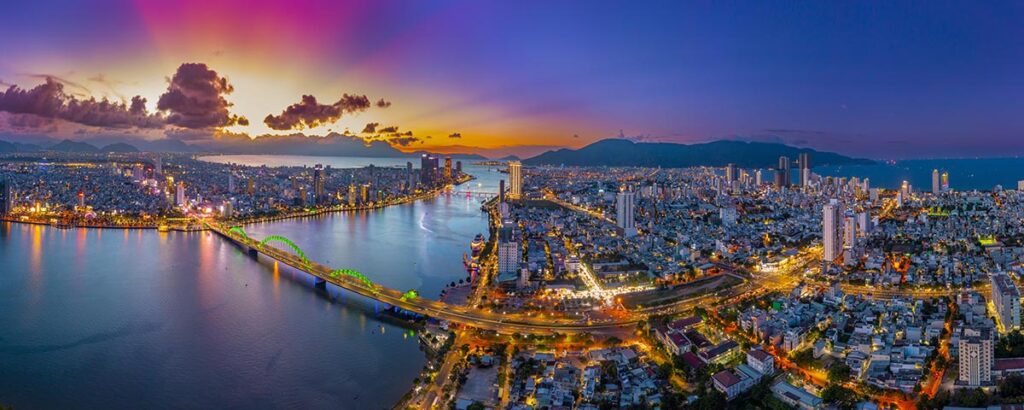
The newly established Da Nang City covers a natural area of 11,859.59 square kilometers with a population of 3,065,628 people. It borders Hue City to the north, Quang Ngai Province to the south, the Lao People’s Democratic Republic to the west, and the East Sea to the east. Da Nang is the largest in area among the six centrally governed cities.
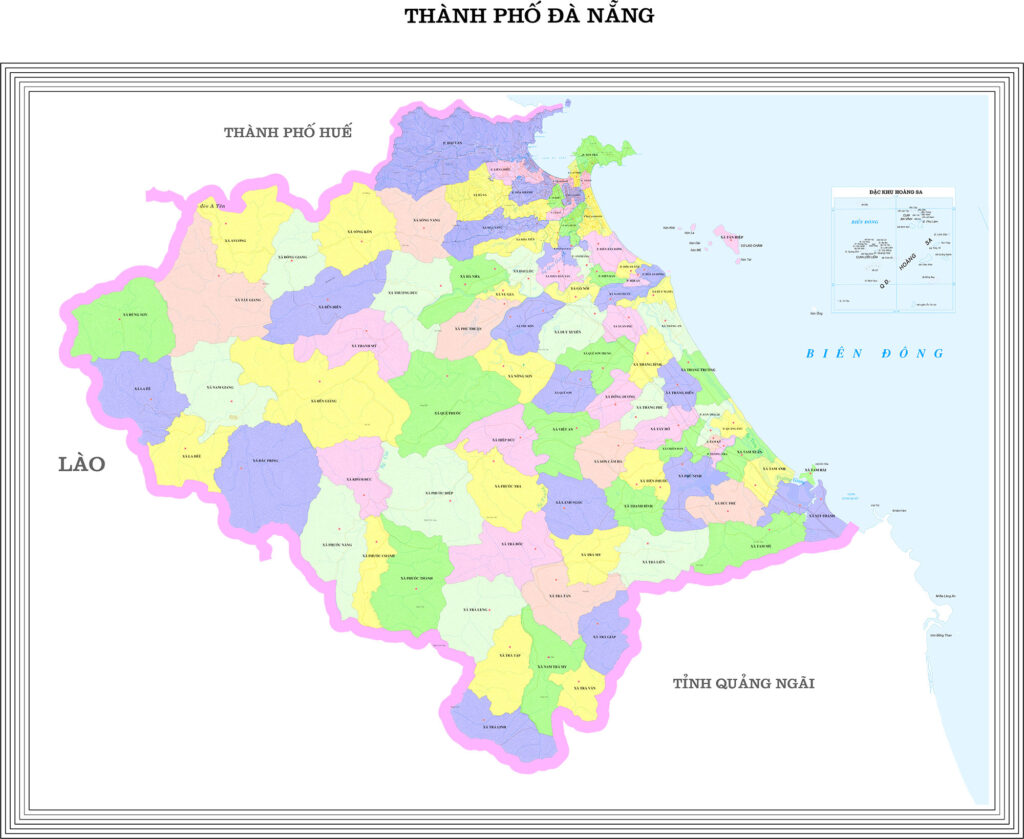
Da Nang City comprises 94 commune-level administrative units, including 23 wards, 70 communes, and one special zone, Hoang Sa. The political and administrative center is located in Hai Chau Ward, Da Nang City.
OVERVIEW OF DA NANG (BEFORE JUNE 12, 2025)
PART 1: GEOGRAPHY AND REGIONAL RELATIONS

Vietnam is situated on the Indochina peninsula in Southeast Asia, with a long land border of 4,550 km. It shares its borders with China to the North, Laos and Cambodia to the West, and the Biển Đông (Eastern Sea) of the Pacific Ocean to the East.
Da Nang, located in the geographical center of Vietnam, is one of 63 provinces and centrally run cities in the country and is a significant socio-economic center of Central Vietnam. As of 2019, its population stands at 1,134,310, making it the largest city in Central Vietnam and the fourth largest in the country.
Da Nang shares its borders with Thua Thien Hue Province to the north and Quang Nam Province to the south, followed by Quang Ngai. These four provinces and cities form the Da Nang region, with a combined population of about 5.8 million people.
Da Nang City spans from 15°15′ to 16°40′ North and from 107°17′ to 108°20′ East. It is situated in the middle of the country on the North-South traffic axis and is accessible by road, rail, sea, and air. Da Nang is located 764km north of Hanoi, 964 km south of Ho Chi Minh City, and 108 km northwest of Hue, the ancient capital.
Da Nang is the focal point for three renowned world cultural heritage sites: The Complex of Hue Monuments, Hoi An Ancient Town, and My Son Sanctuary. On a regional and international scale, Da Nang is a crucial gateway to the Central Highlands and neighboring countries such as Laos, Cambodia, Thailand, and Myanmar via the East-West Economic Corridor (EWEC), culminating at Tien Sa Port. Geopolitically, Da Nang’s strategic location on central international sea and air routes positions it favorably for dynamic and sustainable development.
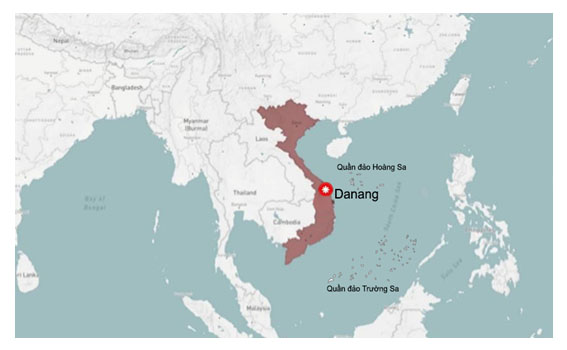
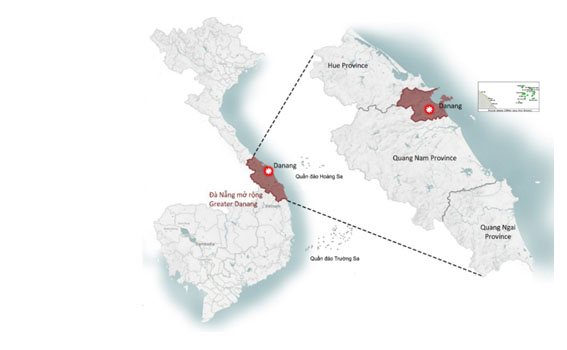
Situated strategically, Da Nang serves as an International Lifestyle Center and Service Center for Central Vietnam and the broader Indochina region.
Positioned along the coast of the Biển Đông and serving as the gateway to the East-West Economic Corridor (EWEC), Da Nang holds the potential to integrate into the global manufacturing and supply chain network.
Notably, Da Nang is a critical transit gateway for landlocked Laos and provides an alternative route for Thailand and Myanmar to access the Biển Đông. Moreover, the city offers direct flights to key regional hubs such as Shenzhen, Bangkok, Hong Kong, and Singapore, presenting an opportunity for Da Nang to establish a modern logistics cluster and trade center and facilitate connectivity to Southeast Asia via road, air, and sea links.
Within Vietnam, Da Nang has emerged as a pivotal urban node in Central Vietnam, complementing the roles of Hanoi and Ho Chi Minh City.
Historically, Da Nang has been a hub for commerce, industry, and education in Central Vietnam. With ongoing economic restructuring, Da Nang stands to solidify its position as the country’s economic, trade, and service center.
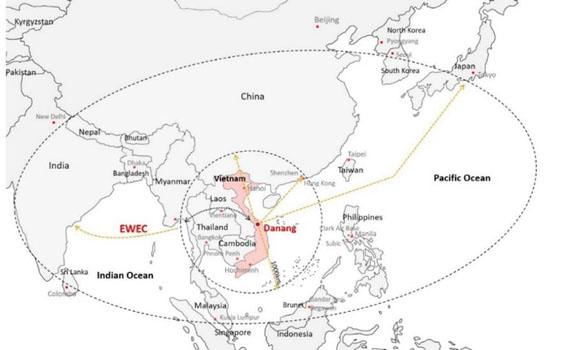
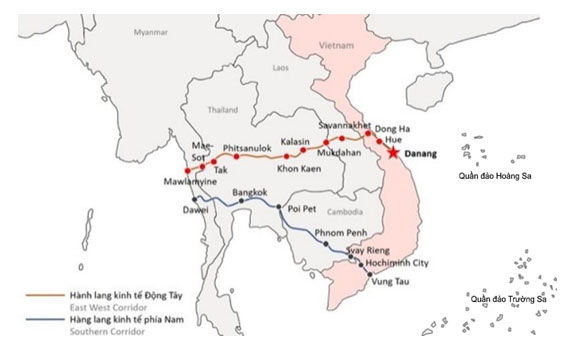
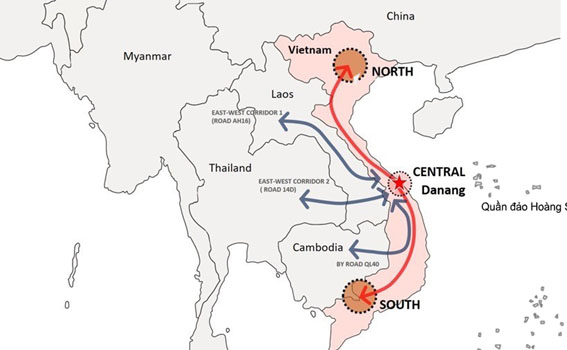

PART 2: DA NANG TOURISM
In recent years, the tourism sector in Da Nang has shown significant progress. It is characterized by unique offerings, a secure environment, and a welcoming community. This growth has facilitated the establishment of a competitive international brand and spurred the development of various industries.
From 2010 to 2019, there was an average annual growth rate of 20.66% in the total number of visitors to Da Nang. The average annual growth rate of international visitors was particularly noteworthy at 27.34%, while that of domestic visitors reached 17.68%. The average annual growth rate of total tourism revenue during this period was 29.11%. In 2019, the average spending per visitor exceeded 3.5 million VND, marking an increase of more than 2.8 million VND compared to 2010. Moreover, the average length of stay in 2019 was 2.68 days, indicating an increase of 0.61 days from 2010.
In 2019, the tourism industry’s direct contribution to the city’s GRDP was 13.6%, with an additional indirect contribution of 17.7%. It is worth noting that the number of budget tourists in Da Nang exceeded that of high-spending visitors, illustrating a significant market share.
From 2010 to 2019, the average annual growth rate of tourist accommodation establishments in Da Nang was 19.2%. By 2019, the city was home to 943 tourism accommodation establishments, providing 40,074 rooms. This represented an increase of 762 establishments and 33,985 rooms compared to 2010. Notably, the number of 4-5 star accommodation establishments also saw a considerable increase, with 89 additional establishments and 15,317 rooms compared to 2010.
Da Nang has established itself as a prominent domestic and international tourism destination, receiving noteworthy accolades. The city’s tourism development has seen substantial investments, aligning with the approved General Plan of Da Nang City. While these initiatives have attracted diverse investments and yielded economic benefits, there remains untapped potential within the tourism sector.
Despite modernized and improved tourism infrastructure, the industry’s rapid growth has resulted in overcrowding at Da Nang International Airport, traffic congestion in the city center, and insufficient wastewater collection and treatment facilities, particularly in coastal areas. Furthermore, the absence of dedicated seaports for tourism and incomplete transport infrastructure for inland waterway tourism pose additional hurdles.
Although considerable investment has been made in tourist accommodation establishments, the rapid proliferation of rooms has led to oversupply. While Da Nang boasts several unique tourist attractions, many are still relatively small-scale and lack high-quality products. The city holds promise for developing new tourism products, including ecotourism, community tourism, inland waterway tourism, urban tourism, and M.I.C.E.
Moreover, Da Nang has the potential to leverage the night-time economy to generate substantial revenue, mainly for tourist destinations. To achieve this, separate night entertainment complexes should be planned to minimize the impact on local activities while allocating land for projects that create large-scale and high-quality tourism products.
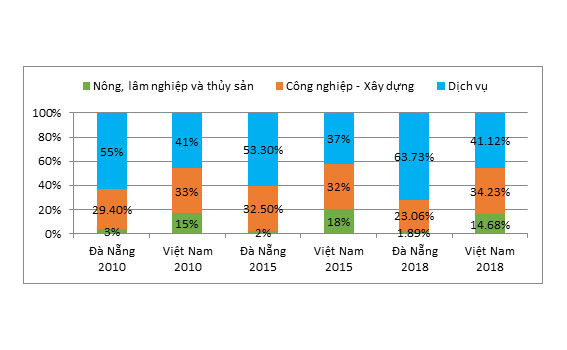
PART 4: CULTURE
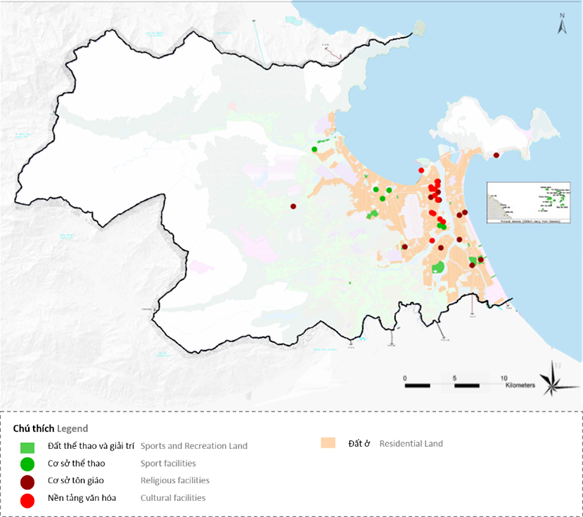
4.1 Preservation and promotion of cultural heritages
The current inventory comprises 02 special national relics, 17 national relics, 55 city-level relics, and 40 relics.
The national intangible cultural heritage list now includes marble handicrafts, Quang-land Tuong art in Da Nang, and the “Cầu Ngư” festival. Village communal house festivals and traditional “Cầu Ngư” festivals are consistently organized and upheld in all districts.
Presently, the city has made significant investments in establishing several prominent museums, such as the Cham Museum, Da Nang Museum, and Fine Arts Museum, to cater to the cultural requirements of the populace.
4.2 Professional art activities
There are three esteemed art institutions in Da Nang: the Nguyen Hien Dinh Tuong Theater, Trung Vuong Theater, and Da Nang Palace of Children’s Culture. Trung Vuong Theater has emerged as a highly regarded and proficient event organizer within the city, enjoying the trust of numerous agencies and entities for coordinating cultural events and art festivals featuring national and international-level song, dance, and music performances.
4.3 Library
The city’s General Science Library is a contemporary establishment comprising 11 book repositories, an autonomous online data source with 25 machines connected to servers, and a broadband access system housing approximately 248,558 documents and 82,000 names. The library’s reading room is designed to accommodate 2,500 readers.
There are no district-level libraries; instead, library services are provided in designated rooms within the Sports and Culture Center or the District Sports and Culture Section of Districts. Consequently, the library’s spatial capacity remains limited.
PART 5: FORECAST FOR TOURISM AND TOURISM SECTOR DEVELOPMENT TO 2030, VISION TO 2045
5.1 Service sector
Emphasis will be placed on the development of high-quality service industries, notably in tourism, trade, logistics services, finance (banking), education, healthcare, and high-quality healthcare. These sectors aim to be highly competitive and globally interconnected, particularly with international service centers within the ASEAN region and worldwide.
5.2 Tourism development
– Aim to cultivate tourism and high-quality services in connection with resort real estate to position Da Nang as a leading regional tourism and service destination. Emphasis is placed on enhancing Da Nang’s tourist appeal through innovative initiatives, increased attractiveness, and superior products and services. The strategy involves aligning tourism development with the city’s identity as a “livable,” dynamic, and cultured urban center celebrated for its festivals and events while concurrently conserving and leveraging cultural and historical assets, preserving the natural landscape, and safeguarding the ecological environment. Additionally, the plan includes expanding the hosting of international and regional events to establish Da Nang as a prominent event city and international convention center. The strategy aims to position Da Nang as a vital tourism gateway within the Central Key Economic Region.
+ The main groups of tourism products include sea-based tourism and high-end resorts; shopping tourism; conference seminars (MICE); cultural, historical, spiritual, and ecological tourism; visits to villages, craft villages, and urban tourism associated with the central city of the entire region. Additionally, there are diverse complementary products such as gastronomic tourism, wellness tourism, and wedding tourism.
+ Focus on investing in key tourism areas: Develop Son Tra Peninsula into a national destination focused on high-end ecotourism linked with nature conservation and biodiversity. Da Nang Bay will transform into a distinctive “coastal city,” featuring unique architecture and top-notch services. The city center will house a living museum complex and a new urban center, CBT (An Don); international trade centers, non-tariff zones, and outlets; pedestrian streets with a mix of shopping and traditional restaurants; as well as amusement projects, entertainment, community eco-tourism attractions, and regional connections, with a particular emphasis on nightlife tourism services.
– Attract more international visitors from high-quality segments, focusing on affordability and reduced dependence on specific markets. This involves targeting tourists from developed countries and expanding into global markets such as Russia, India, Australia, North America, Western Europe, Northern Europe, and the Middle East. Efforts will also be made to further engage with Korea, China, Japan, Hong Kong, Taiwan, and Southeast Asia markets.
– Encourage cooperation in tourism development among the localities of Da Nang, Quang Nam, and Thua Thien Hue within the critical tourism region of the Central Highlands and among domestic, regional, and international localities.
PART 6: DA NANG TOURISM PLANNING TO 2030, VISION TO 2045
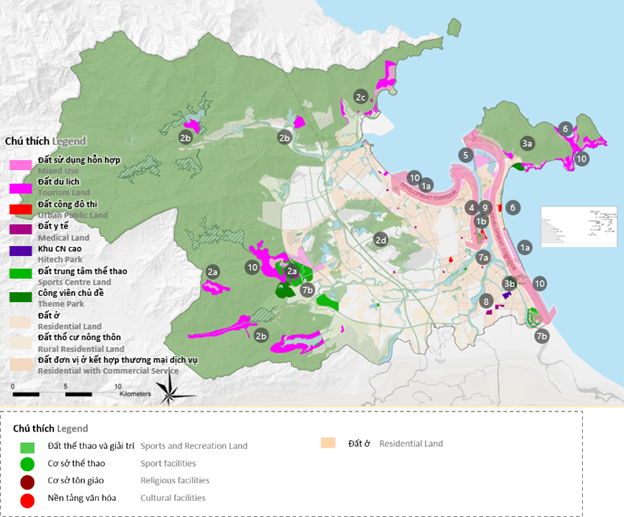
General planning aims to develop restaurant and hospitality services and attractions throughout Da Nang. By 2030, 2,388 hectares of land will be allocated for tourism purposes.:
NATURAL TOURISM
Promoting nature-based and ecotourism endeavors is imperative to maintaining the sustainability of tourism in Da Nang. These initiatives are vital for preserving the city’s distinctive environment and ecosystems. The development of natural tourism should prioritize reducing the chemical impact on the natural environment while establishing alluring destinations that showcase the city’s abundant natural scenery.
- Inland waterway tourism
The city of Da Nang boasts a diverse river and sea system, which forms an integral part of its identity and has the potential to be developed into appealing natural tourist attractions. Inland waterway tourism development should focus on creating high-quality and sustainable waterway tourism products. Specifically, the following areas are critical points of focus:
The Han River, situated in the heart of Da Nang City, holds significant symbolic value for the area. An interconnected network of attractions along the Han River, linking to all tributaries in Da Nang, allows for travel by ships and water-taxi tours. This creates opportunities for tourists to appreciate the beauty of the river and experience the unique activities on both banks.
Furthermore, developing two river tourism corridors aims to capitalize on the distinctive characteristics of the rivers along Da Nang Bay, the East Coast, and the Han River system. These corridors are designed to connect essential tourist destinations, including the coastal area of Da Nang Bay, Eastern beaches, resort facilities, Tien Sa cruise ship pier, main shopping routes, Son Tra peninsula, Small Son Tra island, and other cultural heritage sites of the city.
To ensure the sustainability of Da Nang’s tourism, there is a focus on promoting waterway ecotourism to preserve the city’s environment and delicate ecosystems. Tourism facilities will prioritize minimizing the impact on the natural environment while offering attractive destinations based on natural resources.
- Hillside ecotourism
The western Da Nang region’s hilly topography and diverse ecology present an opportunity for the strategic development of hillside tourism. Leveraging the natural landscapes and scenic attributes, the hillside and western ecological subdivision offer the potential for tourism advancement. The following strategies can be employed for the development of hillside tourism:
- Ba Na Hills
To leverage the climate and natural landscape of Ba Na Hills to develop a high-class resort and entertainment complex focused on relaxation and leisure.
- Western mountainous and forested areas
Ecotourism and adventure activities associated with nature, wildlife, and picnics (Hoa Phu, Hoa Bac, and Hoa Hiep Bac) can be promoted in the mountainous area of western Da Nang. Additionally, locations along National Highway 14G and Ba Na Road, including Mo Stream and areas along tributaries such as the Cu De River, Luong Dong River, and Dong Nghe Lake, offer opportunities for waterway-related tourism activities to be developed in the Western mountainous forest area.
- Van Village Luxury Resort Complex
With its coastal and hillside features, the Van Village luxury resort complex is the only destination south of Hai Van Pass. It offers resort activities, beaches, and experiences centered around nature and culture.
- Phuoc Tuong – An Ngai Mountains
The Phuoc Tuong Mountains, situated in the heart of Da Nang, present a unique opportunity to integrate natural spaces into the city. The area can accommodate city viewpoints, picnics, and retreats within the urban environment.
CULTURAL – SPIRITUAL TOURISM
Da Nang currently features specific religious sites intricately woven into the city’s natural landscape, offering an opportunity to integrate high-end resorts and mountain-sea panoramas with spiritual destinations. The focal point of spiritual ecotourism centers on:
- Son Tra Peninsula
The Son Tra peninsula aims to become a premier national tourism destination, offering Linh Ung Pagoda, natural attractions, a diverse marine ecosystem, thrilling activities, and top-notch resort facilities.
- Marble Mountains
The Marble Mountains in Da Nang can be transformed into a renowned spiritual and natural destination. These mountains are composed of marble, limestone, and caves, making them ideal for sightseeing and exploration. Additionally, the surrounding area features a Marble handicraft village with the potential to evolve into a cultural and spiritual park.
- Urban tourism
In addition to its natural tourism offerings, Da Nang presents a dynamic urban destination with diverse tourism experiences at the city’s heart. Urban tourism activities encompass a wide range of engaging experiences.
CULTURAL TOURISM
- Cultural Zone
Da Nang’s heritage and cultural assets are diverse and spread throughout the urban areas. These include the Cham Museum, Dien Hai Citadel, Da Nang Museum, Fine Arts Museum, traditional markets, religious sites, Nguyen Hien Dinh Tuong Theater, and festivals. These facilities allow visitors to experience and learn about Da Nang’s unique culture.
The area around the city’s administrative center is now being developed as a cultural space, including Central Square, Dien Hai Citadel, Da Nang Museum, and General Library, to take advantage of the unique heritage and architecture.
CRUISE
- Tien Sa Cruise Ship Pier
The construction of Lien Chieu’s new port will transform Tien Sa Port into a dedicated cruise ship pier. This strategic development will enable Da Nang to capitalize on cruise tourism, positioning Tien Sa Port as the premier cruise port in Vietnam and Southeast Asia.
M.I.C.E TOURISM
The city plans to develop MICE tourism activities, focusing on the Eastern coast and along the Han River. This includes the establishment of a financial street on Vo Van Kiet Street, featuring the Complex of Commercial Financial Center, General Entertainment, and Casino project. These developments, in conjunction with existing convention centers, have the potential to support seminar tourism and host significant events and festivals.
SPORTS TOURISM
- Sports and fitness centers
The area’s significant cultural and sports centers include the Tuyen Son Sports and Culture Complex, Hoa Xuan Sports Complex, and high-performance sports centers.
- Asia Park
The existing sports area and Asian Park theme park can be further developed as a regional event space for sports and cultural events, primarily hosting annual international fireworks displays.
- Golf courses
Approved golf projects are included in the 2030 master plan, allowing visitors to participate in golf and resort activities at BRG, Ba Na Suoi Mo, and Hoa Phong–Hoa Phu.
WELLNESS TOURISM
- Medical and Rehabilitation Center
As part of its aim to become Vietnam’s leading Intensive Medical Center, Da Nang will concentrate on developing high-quality medical services, including international hospitals, specialty hospitals, and clinics of global standards, to cater to the needs of both visitors and residents.
- Beach and Leisure tourism
With its long and beautiful coastline and Son Tra peninsula, Da Nang has the potential to develop beach and leisure tourism. The extensive coast provides excellent tourism services, including public beaches and luxury resorts, catering to visitors’ diverse needs.
Reference source:
Da Nang City Portal: danang.gov.vn
GENERAL EXPLANATION ADJUSTING THE GENERAL PLANNING OF DA NANG CITY TO 2030, VISION TO 2045
Approval level: Prime Minister of Vietnam
Appraisal agency: Ministry of Construction
Planning organizing agency: Da Nang People’s Committee
Planning consultant: Joint venture of Sakae Corporate Advisory and Surbana Jurong Consulting Company
DANANG TOURISM PROMOTION CENTER